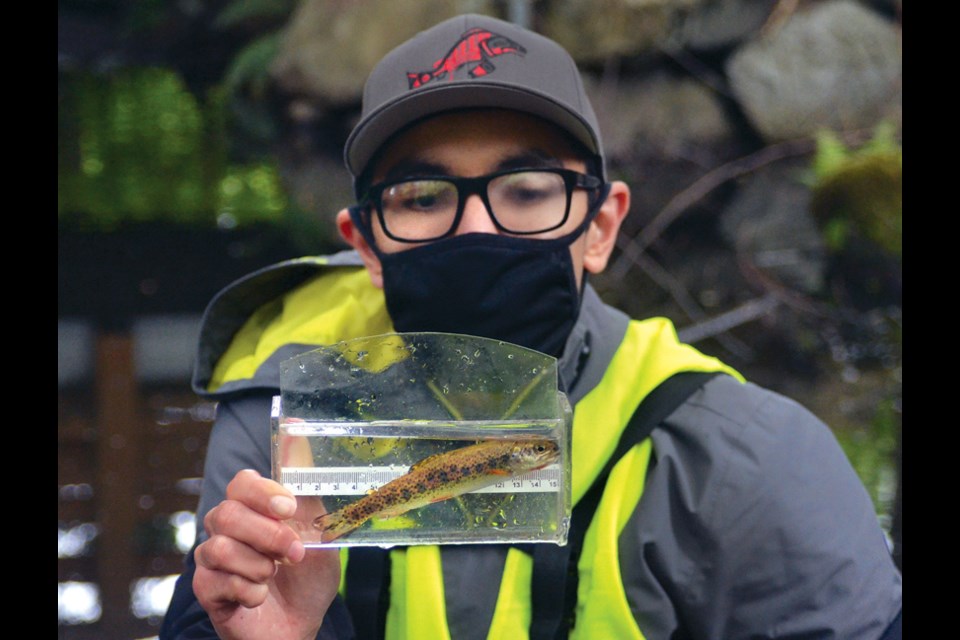There’s something fishy going on in West Vancouver’s creeks.
The West Vancouver Streamkeepers Society has completed their first-ever spring study of salmonid populations and found far more juvenile cutthroat trout and coho smolt and fry than they believed might be swimming around down there.
“The results were quite interesting, and I would say quite promising as well,” said Joseph McDaniel, the volunteer stream keeper who is leading the project. “Based on the results of the survey I think we can say with a fair degree of confidence that if there's a stream running through your neighbourhood or your backyard in West Vancouver, it's a fish-bearing stream.”
For years, volunteers from the stewardship group have conducted surveys of spawning salmon in the fall but this is the first time they’ve studied juvenile salmonids in the creeks.
“Which can be a bit of a tricky game to play because adult salmon are hard enough on their own spot, at times. When you're looking for these little salmon fry that are just a couple of inches long, it can be even harder,” McDaniel said.
McDaniel got approval from Fisheries and Oceans Canada to set upwards of a dozen traps in seven creeks – Eagle, Nelson, Cypress, Hadden, Larson, Rodgers and Lawson – every afternoon. Each morning, volunteers would log what they found in the traps and release their catch.
Streamkeepers welcome results
Between the last week of April and the first week of May, they found 144 cutthroat (more than a third of which were in Lawson Creek), 18 coho smolt and seven coho fry.
“[There are] a lot of very encouraging results that I think speak to the vitality of our streams in urban areas here on the North Shore,” McDaniel said.
Although not in the traps, volunteers spotted “dozens and dozens” of recently emerged coho fry in Hadden Creek, which is particularly inspiring because, last fall, there were no mature spawning coho documented there.
“It is a huge uplift for us. It’s a confirmation that these restoration and enhancement efforts that we're undertaking are working,” McDaniel said.
Habtitat protection critical
But knowing with certainty that the next generation of salmonids is in the creeks raises the stakes for how we take care of their habitat, McDaniel noted.
“Because anything that goes on our lawns, anything that goes on our roadways, ultimately goes through the ground or through the storm drain system into the creek – pesticides, lawn fertilizer, fluids from cars,” he said. “We all have to do our part to make sure that we're helping to protect these very healthy fish populations that are being found.”
The 18 cutthroat spotted in Larson Creek was also a pleasant surprise. In 2018, the creek was devastated by a chemical plume released from a roadwork contractor’s construction site. At the time, stream keepers worried the genetically distinct population of trout in the creek had been wiped out completely.
“That's just absolutely huge news for us,” McDaniel said. “When these tragic events occur, the fish are doing everything they can to survive in these urban streams, and so we need to be doing everything that we can to help them to help them out.”
McDaniel said volunteers will be back out on the creeks for another phase of trapping during the last week of May, just to help establish more baseline data. When that is complete, they will provide the results to DFO and the District of West Vancouver.
“The more data that we have, the better decisions we can make,” he said.


-web.jpg;w=120;h=80;mode=crop)
